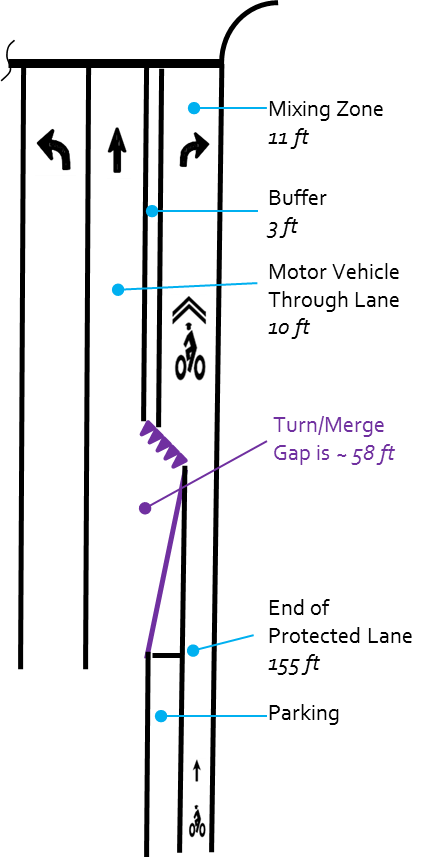OTREC was pleased to brief members of the Joint Policy Advisory Committee on Transportation on August 3, 2009. Staff provided an members with an overview of the OTREC’s research, education, and technology transfer programs. Students Nikki Wheeler and Nathan McNeil summarized their involvement in two projecs: “Investigation of Intersection Safety for Cyclists by Age and Gender” a “Evaluation of Bike Boxes at Signalized Intersections”. Additional faculty participated by providing a summary of their research focus.
Northeastern Universityís Peter Furth is known equally for his research in public transportation, bike planning and traffic signals. Furth brings his diverse interests to Portland for the holiday-shortened week of May 25th. On Tuesday, 5/26, there will be a seminar on his traffic signal priority work and on Wednesday, 5/27, there will be another seminar on his work regarding cycle tracks. In addition, Furth will have a variety of meetings with local transportation practitioners, including a bike tour by staff from the Portland Bureau of Transportation. The visit is co-sponsored by OTREC and IBPI. For more information about the seminars, visit PSU's Center for Transportation Studies.
Portland State University is committed to supporting research that is both regionally focused and globally relevant. This fall PSU has published a brochure featuring some of its exemplary research including OTREC sponsored projects by researchers Madeleine Pullman and Jennifer Dill. Dr. Pullman's research addresses the logistical issues raised by the rising demand for locally produced foods. She has studied supply chain success stories like that of Country Natural Beef, a cooperative family business committed to environmental responsibility, as well as other enterprises that have been slower to adopt such values, in order to better understand the impediments to change. Dr. Dill's research team has given GPS devices to bicycle commuters and collected rider surveys in order to collect data about the routes cyclists take, gender differences in riding and other information that can help cities better understand cyclistsí infrastructure needs. This regionally aimed research creates universal models of environmental responsibility and sustainability from which other cities can benefit.
On May 15, 2008, Jennifer Dill, Associate Professor in the Nohad A. Toulan School of Urban Studies and Planning and Director of the Center for Transportation Studies at Portland State University, participated in a congressional briefing in Washington, D.C. The briefing was sponsored by the Congressional Bike Caucus and the Active Living Research program of the Robert Wood Johnson Foundation on Biking Your Way to a Healthier Community. The Congressional Bike Caucus is chaired by Congressman Earl Blumenauer (OR) and Congressman Tom Petri (WI). Dr. Dill described her ongoing research of regional bike trips, tracked by GPS-equipped bicyclists. She notes that preliminary analysis shows that half of the bicycle riding happened on roads with bike lanes, off-street paths, or bicycle boulevards. She also briefly discussed policy implications and further research needs. Read Dr. Dill’s briefing here: Briefing.
Professor John Pucher, a car-less commuter from the Bloustein School of Planning and Public Policy at Rutgers University, was the first fall OTREC Visiting Scholar and CTS Seminar guest on September 28, 2007. His presentation, "Promoting Safe Walking and Cycling to Improve Public Health: Lessons from Europe," was standing room only, and the audience enjoyed his photos of bike-friendly features in cities across Europe. Pucher examined a range of public health impacts of our urban transport systems and argued that the current car dependence of American cities is responsible for enormous environmental harm, social isolation, lack of physical activity, and traffic dangers. He described how improving the convenience, safety, and attractiveness of walking and cycling in crucial to overcoming these negative impacts. Pucher discussed specific policies and programs used in Europe, and advocates their widespread adoption in American cities. A lively discussion with faculty, students and members of the Portland Bicycle Master Plan Committee followed the seminar.
By Jennifer Dill, Ph.D.
Professor, Urban Studies & Planning
Director, TREC
This week I’m at the International Travel Survey Conference in Australia. The conference happens every three years, attracting over 100 geeky people who spend time thinking about things like stated preference experiments, smartphone data collection, combining sampling frames, and respondent burden. I presented some work from our five city Green Lanes project, comparing our survey data with “objective” measures, such as videos and traffic counts. The focus was on intersections, where the protected lane is no longer separated from motor vehicles. An example of one design used in Portland, OR is shown in the adjacent figure.
Some of the comparisons...
Read moreView slides
Watch video:
Car crashes are still a leading cause of death in the United States, with vulnerable road users like bicyclists and pedestrians being injured or killed at rates that outpace their mode share.
Planners, engineers, and advocates are increasingly adopting Vision Zero and Tactical Urbanism approaches and trying to better understand the underlying causes...
Read more
